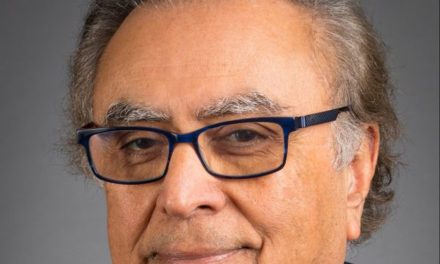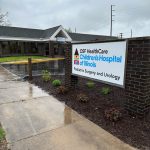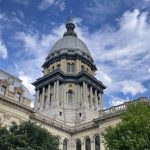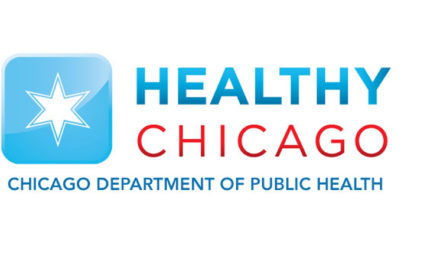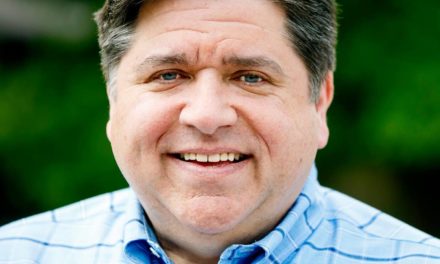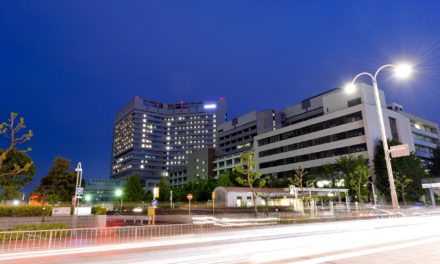
Ruby Mendenhall talks racial disparities in healthcare

Healthcare disparities among Black and Brown communities are nothing new, but the COVID-19 pandemic and recent social unrest have provided an opportunity for policymakers to address systemic issues affecting access to care, said Ruby Mendenhall, assistant dean for diversity and democratization of health innovation at the Carle Illinois College of Medicine.
Mendenhall has recently spoken to lawmakers on ways they can help address these disparities, possibly as early as this fall’s veto session. In a recent interview with Health News Illinois, she talked about diversifying the healthcare workforce, bolstering telehealth and more.
Edited excerpts are below.
HNI: How has the COVID-19 pandemic highlighted existing healthcare disparities?
RM: I would say just the high levels of death among Black and Brown communities have shown what many of us who have done research in this area have known for a while, that there is excess Black death. In the hearing, I talked about David Satcher’s work, the former U.S. Surgeon General and his colleagues, and how they found that there were 83,000 excess Black deaths a year. Meaning that African Americans were dying, not from what you would expect from old age or even diseases, but that there were other conditions that were facilitating this. And COVID-19 has kind of brought this into view. I also talked about Javier Rodriguez and his colleagues when they did the research from 1970 to 2004, it was 2.7 million excess Black deaths. And so it’s been going on, it’s part of how society is structured, it’s part of the racism that prevents groups from getting access to resources such as healthcare.
HNI: Why do you believe there is momentum now, especially in Illinois, to address these systematic issues?
RM: We’ve seen momentum before. During the Civil Rights movement, there were lots of legislation that was passed, particularly affirmative action and other things. Now you kind of see another moment. I think, really, the video of George Floyd, there were many things in that video. It’s the police officers. It was individuals saying, ‘Can you stop? He’s having trouble breathing.’ And then it’s others that stood by watching it, and it was captured for eight-plus minutes. All of us kind of sat and saw it and we saw the inhumanity displayed. And many people have talked about it as watching, literally, like a modern-day lynching. Some of them have talked about it as an Emmett Till moment for this generation. So I think it struck a chord on so many levels, and again, for communities of color, it’s not new.
HNI: Are you concerned that the opportunity to make systematic changes could be missed?
RM: I think anytime you have social movements, you have to think about the outcome. How do you achieve it and then most importantly, how do you sustain it? It’s a long struggle. We recently had lots of discussions about the 400 years of racial trauma. So the history isn’t even just about this moment. It’s across 400 years. And we talk about this idea of the changing thing that, even as progress is made, that there are different ways the inequality, the health disparities and other disparities continue to be embedded in the very fabric of society and what does it mean to create this justice, equal society. We all have been thinking a lot about this, and how do you create changes that are sustainable? How do you create a society where all groups, all humanity is profoundly different respective? So yes, that’s a concern.
HNI: What are some of the biggest challenges in taking on these health disparities?
RM: So in some ways, we’re trying to really shift how we think about health and wellness, and not just to address it at the moment of illness. I wrote a paper about the medicalization of poverty, and how as a society we’ll pay a lot of money for children with asthma to come into the emergency room and other things, but not as much in terms of prevention. And there are a lot of things that we know are helpful in terms of prevention. So I think to really be able to create this culture where it’s clear to everyone what things can really facilitate your health. And then there’s money invested in that before the illness and the disease, the health disparities and the excess death among different groups take place. I definitely think that a part of this is to really look at prevention.
And then another part that I think is really critical, and we’re also thinking about, is how do you have physicians and nurses and others that represent the spectrum of U.S. society? And how do you diversify the health field, because with diversity comes knowledge about different cultures. Due to oppression and other things, there’s lots of distrust of the medical profession, and diversity, I think, will go a long way toward people feeling that they can trust it. That there’s an interaction when they talk that they’re heard. And so, also related to that, I think it’s important that community members are a part of medical schools, that they are part of this innovation. We’re in the midst of a pandemic, and we’re looking at innovations and vaccines and other things and I think we need a broader collective mind to – even before the pandemic – to think about health and wellness and what’s needed.
HNI: You told lawmakers during a recent hearing that telehealth has really helped expand access in underserved communities. Can you tell me more about its impact when it comes to addressing disparities?
RM: I should start with I know that some are concerned in terms of connectivity. That’s an issue for many households who don’t have computers or who don’t have access. And I think, when I talk about innovation, I think that’s another area for innovation that could be really profound and powerful in terms of how you create ways that people can access. This isn’t just about health. It’s also about schooling. How do we create this equity and access? And then also, bias and algorithms as people are kind of using the information to predict treatment and other things, so those are issues.
But in terms of the benefits, this is democratizing access to care and also research. So (Cristina) Lopez wrote an article where she talks about how some of the health disparities are because of who’s represented in the research that gets done around best practices around what works and what context and under what circumstances. And often groups of color are not represented. And this telehealth broadly defined could be one way that it lowers the barrier to having them participate in research. Another thing in terms of barriers is cost. Many of us think about cost and transportation to get to and from the doctor’s appointments, the travel time, the wait time and what that means in terms of work and taking off sick days. That often can be a barrier, so to have that access is one way to address that. And another way I’ve talked about this distrust and sometimes lack of comfort, and even sometimes a kind of miscommunication or a failure to communicate among providers from different backgrounds, especially when it comes to mental health. And already the stigma and the distrust or fear by not being limited to who’s in your geographic region could also increase individuals’ willingness to get treatment and to talk with individuals. And then also in terms of confidentiality, you’re not necessarily going into the office, it’s in the privacy of your own home. And then there’s research that shows when it is telehealth and its in the home and, of course, with the patient’s approval, that the family can be more engaged, and then that helps in terms of having more buy-in into the healing process.
HNI: What more can policymakers do to address disparities?
RM: I think definitely funding in terms of prevention activities, in terms of education. I talked a lot about this idea of a core of community health workers. I think about all of the research on prevention that’s talked about the importance of having community health workers, people who are embedded in the community, who know individuals who can go out and provide the latest information around best practices. And use this kind of force to help with prevention. And I really do feel like that’s one of the key parts, helping during the pandemic, but even when there isn’t a pandemic in terms of how you get knowledge about health and wellness to individuals.
As I said before, diversifying healthcare providers, and that means providing support and providing pathways. We’re working on a pathway program now to the College of Medicine where young people get exposure early, they get mentors, are able to ask questions and we’re able to give them experiences where they then become experts in terms of health and wellness… I think investments in areas like that could have profound payoffs. I’m not saying that’s the only areas of investment, but those are some that I think could have a really profound payoff.

